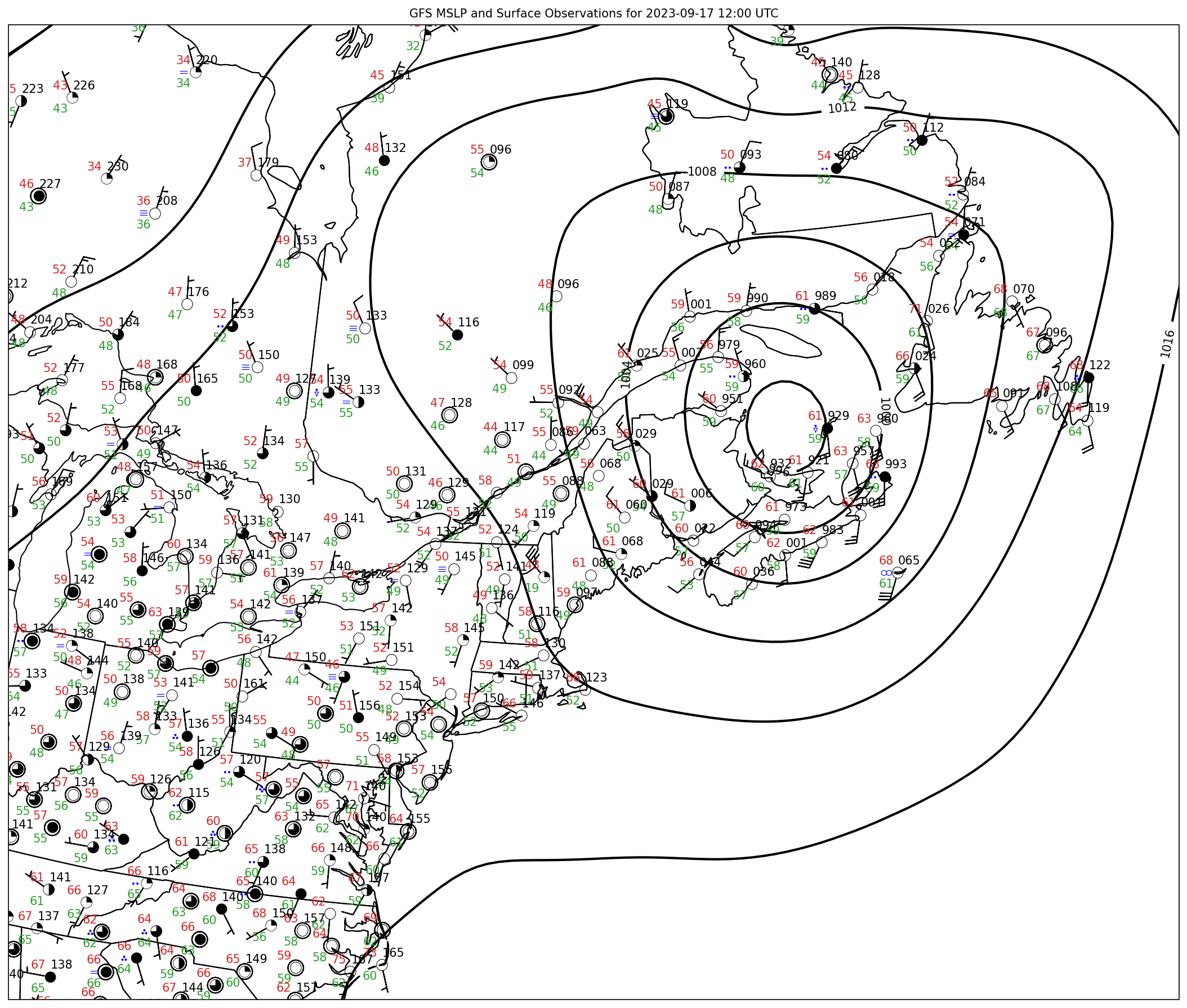13.4. Guldberg-Mohn Balance (Surface Balance)#
At and near the surface, friction begins to affect atmospheric flows by slowing the wind. Because friction acts to slow the wind, the Coriolis force subsequently does not turn the wind as much and therefore the wind will flow across isobars. This is known as the Guldberg-Mohn force balance and can be written algebraically as,
The greater the roughness of the surface, the stronger the friction, the greater the angle that the flow will cross the isobars. In Figure 13.4 notice that near the center of low pressure just north of Nova Scotia, CN, there are a number of wind barbs that are crossing the isobars and heading into the low center. The friction near the surface is causing the speed of the wind to slow down, thus reducing the overall Coriolis force deflection and yielding a wind that is not parallel to the isobars and ultimately goes into a low.

Fig. 13.4 Demonstration of Guldberg-Mohn surface balance with actual observations and GFS MSLP from 17 September 2023 at 12 UTC.#
